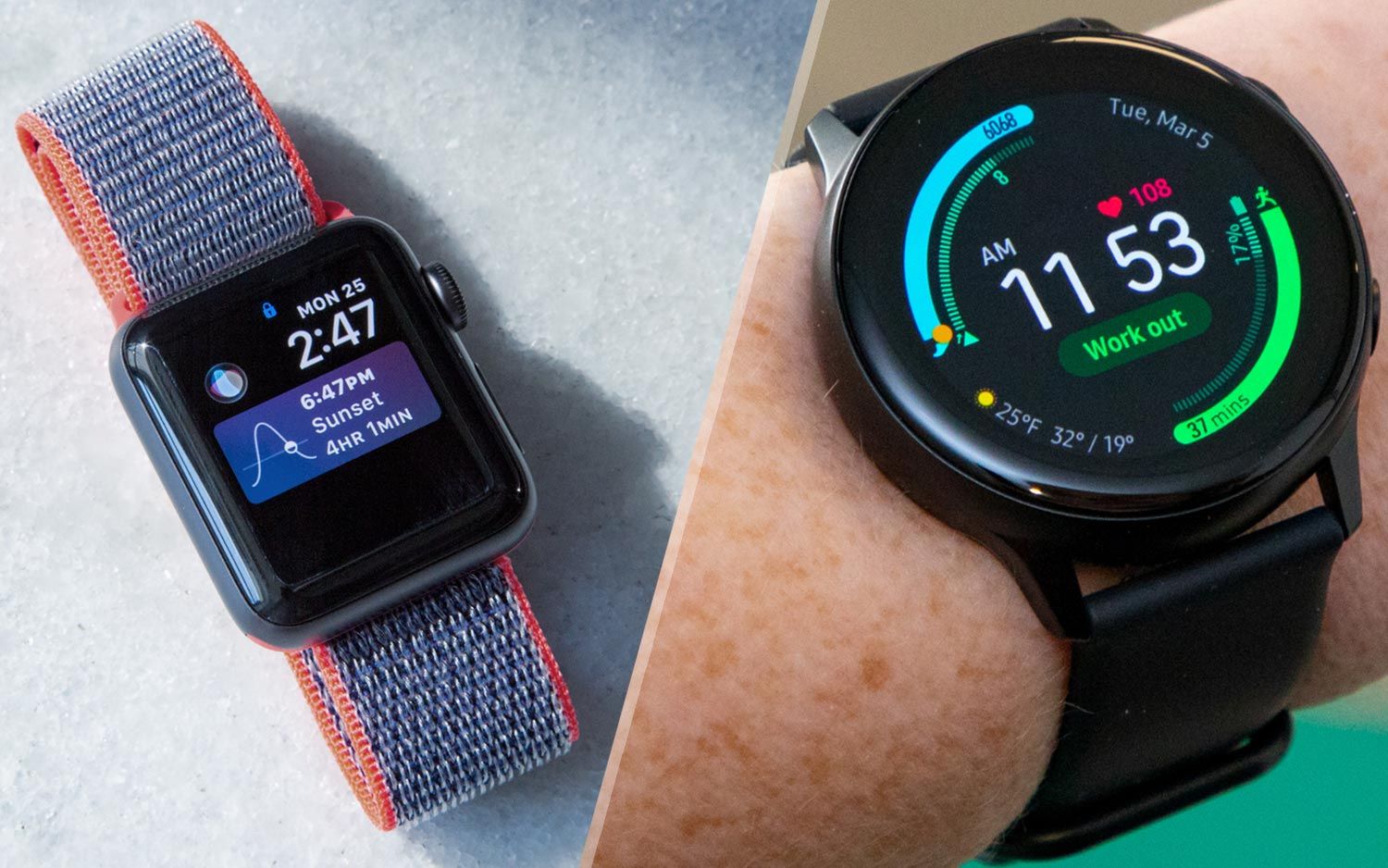When comparing the Galaxy Watch Active 2 with the competitors of the Apple Watch Series 5, many media units used to often think that Apple products use the LTPO TFT OLED screen but Samsung did not. However, a recent report from the technology station The Elec shows the opposite. In the latest Galaxy Watch generation, Samsung has used the same LTPO OLED display technology, similar to the Apple Watch Series 4 introduced last year.
Many previous comparisons show that the Galaxy Watch Active 2 does not have an LTPO TFT screen like the Apple Watch Series 5.
Specifically, The Elec said that the Galaxy Watch Active 2’s Super AMOLED screen is behind Samsung Display, which is now in mass production at the A2 factory.
Previously, Samsung Display successfully developed the LTPO TFT panel technology, which was first applied to the Galaxy Watch Active 2 Super AMOLED panel.
LTPO TFT technology was first commercialized on the Apple Watch Series 4, launched in September 2018, almost a year earlier than Samsung’s Smartwatch. For OLED displays, the component responsible for current control is called the TFT panel, and LTPO is the technology that makes this layer.
The screen resolution is lower than LTPS, but has the advantage of improving battery life
For a long time, there have been three TFT manufacturing technologies, a-Si, LTPS and Oxide (IGZO), each with their advantages and disadvantages. For LTPO, this is a new hybrid technology between LTPS and oxide that replaces silicon materials with IGZO and uses the LTPS high-temperature production process. Its biggest advantage is the superior energy saving, while Apple wants to take advantage of LTPO TFT to keep the continuously active display function at the lowest performance level. For this performance, the company received the Screen of the Year award from SID.
At the time the Apple Watch Series 4 was launched, the company had not achieved its goal. Only with the just-introduced generation of the 5-series were screen control chips developed that fully exploit the potential of LTPO TFT and help extend battery life when the watch is running continuously. Apple Watch’s OLED panels are manufactured in the E2 line at the Paju plant in Gyeonggi Province, LG Display supplier. This is a more advanced technology than traditional LTPO or IGZO, resulting in lower productivity and high costs.
Back in the case of the Galaxy Watch Series 2, industry sources said that Samsung Display produces 50,000 flexible panels per month from its Gen 5.5 line, which is its highest capacity level. The company has conducted its own research to perfect LTPO TFT technology and manufacturing based on its experience, which is independent of Apple and LG Display. Some say that Samsung Display’s confidence is the reason they are determined to catch up with the technology researched by American companies.
Samsung Display, which is traded a year later as Apple, has not yet been able to introduce new technologies to smartphone screens, so they chose smartwatch as their first app. There are two main obstacles to this. The first is that the cost and complexity of LTPO are higher, resulting in a smaller screen that is more useful than a large screen. The second is that today LTPO TFT cannot compete with the required resolution on smartphones and does not help to save much power because the phone screen is more active than the clock.
The Apple Watch and the Galaxy Watch both use LTPO TFT technology, which will make them faster and more popular in the industry.
